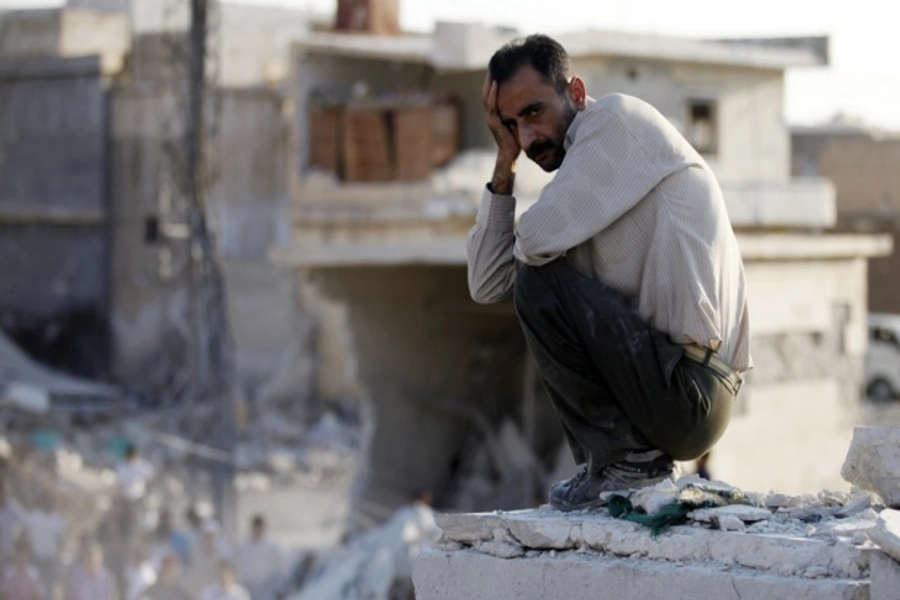You Might Have Missed: Israeli Strike on Iran, No-Fly Zone in Syria, and Ernest Hemingway

More on:
Benny Morris, “Obama’s Last Chance Before Israel Bombs Iran,” The Daily Beast, August 16, 2012.
(3PA: In this piece, Morris predicts “Israel is likely to strike [Iran] before the American elections.” In July 2008, Morris boldly predicted in the New York Times, “Israel will almost surely attack Iran’s nuclear sites in the next four to seven months.” Morris also writes of Israel’s 1981 attack on the Iraqi Osirak plutonium reactor, “That successful strike actually put paid to Saddam Hussein’s nuclear weapons program, which was never resurrected.” It is totally untrue that Iraq’s nuclear program was never resurrected. As Målfrid Braut-Hegghammer wrote in the journal International Security: “The attack had mixed effects: it triggered a covert nuclear weapons program that did not previously exist, while necessitating a more difficult and time-consuming technical route to developing nuclear weapons.”)
Jeffrey Lewis, “The Ayatollah’s Pregnant Pause,” Foreign Policy, August 15, 2012.
Luke Coffey and James Phillips, “No-Fly Zone Over Syria: The Wrong Policy at the Wrong Time,” Heritage Foundation, August 15, 2012.
U.S.-led airstrikes, especially without adequate regional buy-in from Turkey and other allies, could be the first step in an incremental process that could draw the U.S. into a protracted civil war that could continue long after Assad is gone. The U.S. may be limited in what it can do, but doing nothing will almost certainly yield an outcome that is not in America’s interest…
The U.S. Air Force is not for hire every time there is a popular uprising somewhere in the world. Considering how little the West knows about the Syrian opposition and how fragmented it appears to be, it is currently not worth the amount of resources and manpower required carry out robust airstrikes à la Libya. While establishing an NFZ might be a feel-good measure, under the current conditions, it would likely achieve very little.
W.J. Hennigan, “Key Test Set for Sustained Hypersonic Flight,” Los Angeles Times, August 13, 2012.
The Pentagon believes that hypersonic missiles are the best way to hit a target in an hour or less. The only vehicle that the military currently has in its inventory with that kind of capability is the massive, nuclear-tipped intercontinental ballistic missile.
Other means of hitting a distant target, such as cruise missiles and long-range bomber planes, can take hours to reach their destination.
When pressed for an example of the need, military officials often point to a 1998 attack when the U.S. military tried—and failed—to kill Osama bin Laden. Navy vessels in the Arabian Sea lobbed cruise missiles at training camps in Afghanistan, hitting their targets—80 minutes later. By then, Bin Laden was gone.
But with a hypersonic missile, such as the technology being tested on the WaveRider, "the attack would have been cut to just over 12 minutes," Richard Hallion, a former Air Force senior advisor, said in an Air Force Assn. report about hypersonic technology.
(3PA: There has never been any proof that Bin Laden was at the Khost, Afghanistan training camp during the cruise missile raid. In 2006, Bin Laden’s bodyguard Abu Jandal told 60 Minutes that Bin Laden left his Tarnak Farms compound after the East Africa U.S. embassy bombings, knowing the United States would retaliate militarily. According Abu Jandal: "There was a fork in the road. One road leading to Khost and training camps, and another one leading to Kabul," Abu Jandal recalls. "I was with Sheikh Osama in the same vehicle with three guards, so he turned to us and said, ’What do you think? Khost or Kabul?’ We told him, ’Let’s just visit Kabul.’ So Sheikh Osama said, ’OK, Kabul.’ " The next day, some 70 U.S. cruise missiles struck Khost.
U.S. Department of State Daily Press Briefing, August 13, 2012.
QUESTION: But if I could just go into that second one. The Secretary consistently says we don’t want to make it worse. We want to do something, but we don’t want to make it worse. Would a humanitarian corridor make things worse? What would be the downside of that?
MS. NULAND: Well again, I don’t know what that set of words means to you, Jill – a humanitarian corridor – I mean, de facto now, as you know, the opposition forces control territory from north of Aleppo all the way up to the border. So de facto they are able to operate in a different way now, they are controlling checkpoints into Turkey, they are able to operate in a way that was more difficult when the Syrian Government controlled all of those checkpoints. So—
QUESTION: Are you saying that de facto, there is a corridor?
MS. NULAND: I’m saying de facto there is opposition control of territory all the way up to the border. And that changes the way they operate. It changes the way – the needs that they might have.
U.S. Department of State Implementation Plan of the National Action Plan on Women, Peace, and Security, August 2012.
Nicholas Reynolds, “Ernest Hemingway, Wartime Spy,” Studies in Intelligence, June 2012.
From the archive:
"Intervention, Please: the ’No-Fly Zone’ Requests You Don’t Hear About," The Atlantic, January 10, 2012.
(3PA: As the Syrian rebels repeat their demands for a U.S. or UN-led no-fly zone over the territory they control, it is worth noting the many demands for similar no-fly zones in countries not in the headlines today.)
More on:
 Online Store
Online Store